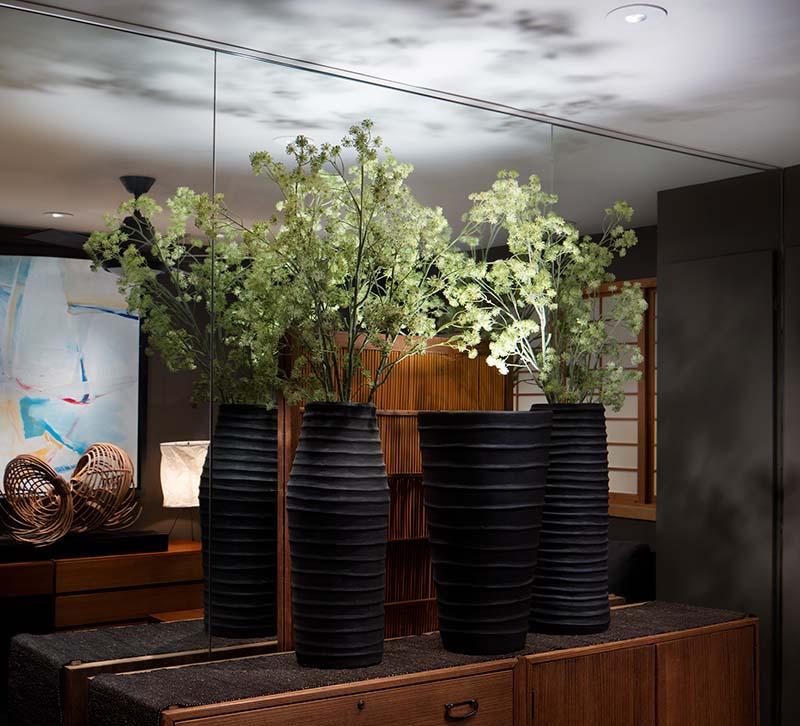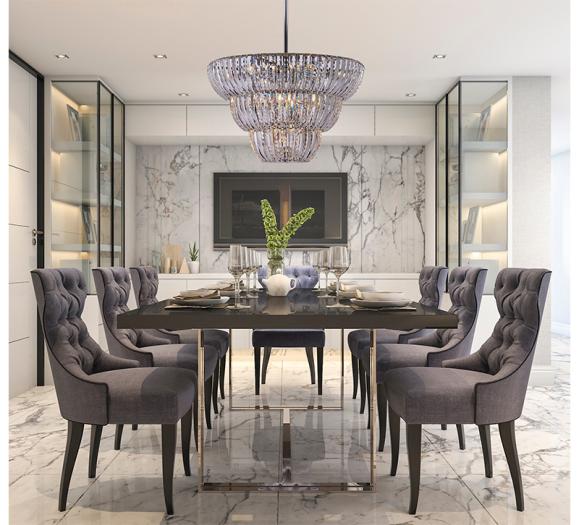As I have explained before, lighting falls into four functions: task, ambient, accent and decorative. None of these lighting types function very well by themselves. They have to work in conjunction with each other to make a successful lighting design. This time I want to explore accent lighting in particular.
Take a look at the study (shown above). There is accent lighting coming from the recessed adjustable fixtures in the ceiling. There is a decorative paper lantern in the corner and a hidden source of ambient light within the center vase. The indirect lighting also casts intriguing shadows onto the ceiling and walls. These various light sources are layered together to create a cohesive design.
What I see quite often are beautiful interior images with amazing lighting, appearing on the pages of design magazines. When I study the shot, I can see that there is only accent lighting with maybe some decorative. Yet magically there seems to be a beautiful glow of ambient light. Having worked with an architectural photographer, I know that the fill light we see is coming from temporary fixtures, brought in for the shoot.
Clients will come to me with these pictures torn out of magazines (well actually it’s PDFs of screen grabs from online magazines). They will excitedly show me a room filled with just recessed fixtures. They think that all the lighting they see is coming from the accent lights in the ceiling. I then have to explain to them that what they are seeing is an alternative truth. There actually needs to be a permanently installed sources of ambient light for their home to look similar t the one in the design publications.
Don’t get me wrong, accent light does provide a valuable service. It helps create depth and dimension. It highlights art, sculpture and tabletops. Yet, if accent lighting is the only source of illumination it creates the museum effect, where the art and art objects appear to be more important than the people within the space.
A room with only accent lighting is dramatic, but visually overtakes the people and the architecture within the space. You can’t live in drama all the time. It's visually exhausting. That’s why you get tired while walking through a museum. Your eyes are trying to adjust from the highlighted art to the dark spaces in between. By the third exhibit hall you are ready to sit down and have a latte.
Adding that all important layer of ambient light fills up the volume of the room, which softens the shadows on peoples faces and creates a warm, inviting feel to the space. The accent lighting will draw you in, but the ambient light will make you want to stay. Having said that, I think that it is a-okay to have a dramatic entryway or foyer. People don’t linger here. It is a pass-through space.
This tabletop (shown above) is highlighted using 2 recessed adjustable recessed fixtures. They are set at 40 degree angle to cross-illuminate the surface. Using a single fixture on a table with a highly polished surface would create uncomfortable glare as people pass by. This is especially important for dining room tables.

A single recessed adjustable fixture shows off this Carrera marble sculpture (shown above). Pointed almost straight down, it accentuates the surface texture

A recessed puck light within a niche adds dramatic lighting for this white marble Ganesh (shown above). It can be seen in the distance, overlooking a flower arrangement on the coffee table.

This ironwood sculpture (shown above) has a hot spot on her face. Using a accessory lens which elongates the beam spread will give a more even distribution of illumination.
In terms of food, think of accent lighting as dessert. Decorative lighting is the sparkly topper on that dessert. Task and ambient light are the meat and potatoes. You need the entrée. You can’t just fill up on sweets.







